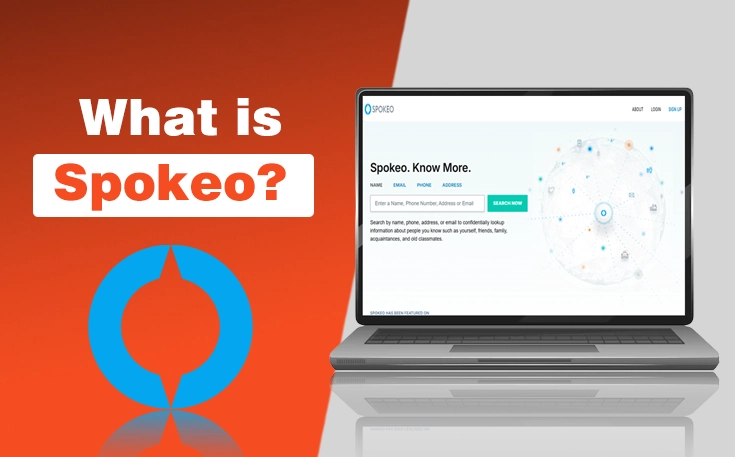When I first started learning about branding, the concept of brand recognition felt both simple and complex. On the surface, it seemed like just getting people to remember a logo or name. But as I dug deeper, I realized it is so much more than that.
In today’s highly competitive world, especially in 2025, building brand recognition means standing out in a noisy marketplace. It is about creating lasting impressions that go beyond just being seen.
To assist you in your journey, I have created this guide on what is brand recognition. Additionally, I will share details on how to build a memorable brand that people won’t forget.
What is Brand Recognition?
Brand recognition is the ability of people to identify a brand based on visual or auditory cues such as a logo, slogan, color scheme, or packaging.
It means that someone can look at your product or see your ad and instantly say, “I know that brand.” It doesn’t necessarily mean they have bought from you or know everything about your product. But it does mean your brand has made its way into their memory. In marketing terms, It is a critical early step in building a strong brand presence.
Importance of Brand Recognition
- Builds instant trust
- Drives customer loyalty
- Improves marketing ROI
- Creates a competitive advantage
- Increases word-of-mouth referrals
With so many brands fighting for attention across social media, search engines, podcasts, and streaming platforms, having a recognizable brand is no longer optional. It is essential.
When your brand is recognizable, customers trust it faster, consider it more credible, and are more likely to purchase from you. If someone sees your product on a shelf or your ad on Instagram and recognizes it instantly, that familiarity gives you an edge.
And in 2025, where digital noise is louder than ever, familiarity builds trust and trust drives sales.
Brand Recognition vs Brand Awareness
Before going further, let me clear up a common confusion: brand recognition vs brand awareness. Brand recognition is not the same as brand awareness. They are related but different.
- Brand Recognition: It is all about identification. Can someone identify your brand when they see your logo, color, packaging, or tagline?
- Brand Awareness: It goes a level deeper. Awareness means the person not only recognizes your brand but also knows what it stands for, what it offers, and perhaps even your values.
In short, brand recognition is a stepping stone to full brand awareness. Both are crucial, but recognition usually comes first.
What are the Core Elements of Brand Recognition?
Before you can improve your brand recognition, you need to understand what are the core elements of brand recognition, on which it is built. Each of the elements that I have listed below contributes to how people perceive and remember your brand.
- Logo: Your logo is often the first thing people associate with your brand. Think of Apple’s bitten apple or Nike’s swoosh. A simple, clean, and unique logo can do wonders.
- Color Scheme: Colors play a huge psychological role. Studies have shown that colors can boost brand recognition by up to 80 percent. Coca-Cola’s red or McDonald’s yellow arches are unforgettable for a reason.
- Tagline or Slogan: A catchy and meaningful slogan sticks. “Just Do It” is inseparable from Nike. A strong tagline reinforces your brand’s purpose and identity.
- Typography: Fonts may seem small, but they matter. Your typeface should be readable, memorable, and aligned with your brand’s tone.
- Sound and Music: Think of Netflix’s “ta-dum” or Intel’s chime. Audio cues are often overlooked but are incredibly powerful for recognition.
How to Build Brand Recognition from Scratch?
Building brand recognition from scratch is not an overnight thing. It is a gradual process that comes from
- Showing up consistently.
- Knowing exactly who you are.
- Making sure every piece of your brand works together to leave a lasting impression.
Now, let me take you through the exact steps I have followed to build strong brand recognition from the ground up when I first started WebTech Solutions. Whether you are launching something new or giving your old brand a fresh face, these strategies form the foundation of any memorable brand.
I am not just sharing theory here. These are practical and proven moves that work when done with intention and consistency.
1. Define Your Brand Identity
The very first task you have to accomplish is to define who you are. If you can’t clearly answer what your brand stands for, no one else will be able to either. For this purpose, you have to ask yourself a few questions, like:
- What is your mission?
- Are you here to disrupt a market, simplify a problem, or make people feel a certain way?
- What are your values?
- What kind of people are you trying to serve?
- What tone best represents your brand, such as professional, casual, playful, or bold?
When you know the answers to these questions, you will be able to build a stronger foundation that can help you for a longer duration.
Practical Example:
Let’s say you are building a skincare brand. If your target audience is young and eco-conscious women, then your visuals, copy, packaging, and even your customer service voice should feel light, natural, and honest.
Earth tones, clean fonts, and messaging that talks about natural beauty and transparency would be aligned with that identity. Everything from your visual elements to your tone of voice should reinforce this identity. Your brand should feel like a person your audience can connect with.
2. Be Consistent Across All Channels
In my experience, this is the point where many new brands mess up. You design a killer logo, but then you use a completely different style on Instagram. Or your email signature uses a serif font while your website sticks to sans-serif. It may seem small, but these little inconsistencies erode trust and make it harder for people to remember you.
Brand recognition thrives on repetition. The more often someone sees the same visuals, words, and style in different places, the deeper it sticks. Whether it is your website, Facebook page, YouTube channel, packaging, or business cards, everything needs to align.
How to be consistent across all channels?
Create a brand guideline and stick to it. Define your brand colors with exact hex codes. Choose 1 or 2 fonts and use them everywhere. Keep your voice the same across platforms. When a customer sees your content, no matter where it is, they should be able to say, “That’s definitely them.”
3. Utilize Social Media Strategically
First, you have to clear your mind that you don’t need to be everywhere on social media platforms. That’s a trap. What you need is to be present where your audience actually spends time, and then show up there consistently.
You can start by choosing one or two platforms where your ideal customers are already active. For example, if you are targeting Gen Z or Millennials, TikTok and Instagram are likely your best bets. If you are in the B2B space, LinkedIn might be more useful.
However, remember that just showing up is not enough. You need to create content that aligns with your brand identity. That means your graphics should use your brand colors and fonts. Your captions should reflect your tone, no matter if it is witty, inspirational, authoritative, or friendly.
Also, consider the format, like if your brand is creative or visual, focus on reels, short videos, or carousels. And if it is more educational, try infographics and how-to posts. Besides, some effective strategies you should follow are:
- Post regularly.
- Comment back.
- Engage with your community.
Over time, your brand becomes part of your targeted audience’ scroll, and that familiarity breeds brand recognition.
A Pro Tip From WebTech Solutions
Don’t underestimate the power of storytelling on social media platforms when building brand recognition. Share behind-the-scenes posts. Talk about your challenges and wins. Let people see the human side of your brand. That’s the stuff people remember.
4. Use Paid Ads to Increase Visibility
Most of you may have heard about running paid ads to boost your visibility, and will have questions about whether it is effective. The simple answer is yes.
Although organic reach is important, in a crowded digital space, it can’t deliver you the desired outcomes consistently anymore. That’s why strategic use of Paid Ads is important, as it can fast track your brand recognition efforts if you follow the right tactics.
The goal with ads is not just clicks or conversions. It is also about impressions. When people keep seeing your logo, your color scheme, or your brand name repeatedly, it starts to stick in their minds.
And as I have already said, you need to be strategic when running ads for building brand recognition. Some of the key tactics that I have implemented have brought me magnificent results. Now, I am sharing the same with you in the under section:
- Focus your paid campaigns around one core visual identity.
- Use the same colors, logo placement, fonts, and brand voice in all your creatives.
- Stick with a signature tagline or phrase and use it across multiple ads.
- Consistency in paid content works like a digital billboard, as it imprints your brand into the subconscious.
I also recommend using retargeting. When someone visits your website or engages with your social content, hit them again with follow-up ads. The more they see your brand, the more they start to feel like they “know” you.
And in branding, familiarity is gold.
5. Collaborate with Influencers
Now, I know the word “influencer” might make you think of flashy Instagram stars. But influencer marketing, when done correctly, can supercharge your brand recognition.
It is all about social proof. When someone your audience already follows and trusts mentions your brand, it creates instant familiarity. You borrow some of their trust and transfer it to your own name.
But don’t just go for big numbers.
I have seen smaller brands get way more impact working with micro-influencers who have deeply engaged communities. It is not about vanity metrics. It is about relevance and relatability.
Pick influencers who align with your brand’s values, tone, and style. If you are a sustainability brand, work with creators who actually live a sustainable lifestyle. If you are in fitness, find athletes who genuinely use and love your product.
Some mighty effective tactics in influencer collaboration are:
- Make sure the influencer uses your visuals properly.
- Provide branded templates, logo placements, or even video intros so the content looks cohesive.
- Over time, if an influencer’s audience keeps seeing your brand pop up, it becomes a name they remember.
Now, I want you to know that
Do not treat influencer campaigns as one-off events. Aim for long-term relationships. Ongoing mentions over weeks or months are far more effective than a single shoutout.
Real World Examples of Strong Brand Recognition
If you can stay committed to the steps I have mentioned above and execute them well, your brand won’t just be seen. It will be remembered. And in today’s competitive landscape, that’s what truly sets you apart.
Let’s look at a few companies that absolutely nailed brand recognition.
- Apple: From the sleek logo to the minimalist product design, Apple has created a brand experience that is instantly recognizable. Even the packaging screams Apple before you even open it.
- Coca Cola: With over a century of consistent branding, Coca Cola’s red and white logo, bottle shape, and fonts are among the most recognized visuals in the world.
- McDonald’s: Golden arches, red and yellow color scheme, and that classic “I’m Lovin’ It” jingle. You see a billboard, and you know it is McDonald’s even from far away.
What are the Common Branding Mistakes That Hurt Brand Recognition?
There are chances that you might be working hard on your brand, but still not getting recognized. If so, you may certainly be making one of the most common branding mistakes I have listed below:
- Changing Visuals Too Often: If you change your logo or colors frequently, people don’t get a chance to form a connection. Stick to one visual identity and build from there.
- Poor Design Choices: Low-quality logos, cluttered designs, and inconsistent branding confuse your audience. Invest in professional design or at least keep it simple and clear.
- Ignoring Customer Experience: Brand recognition is not just visual. If your service or product is inconsistent, hard to access, or unpleasant, people remember that too. And not in a good way.
How Brand Recognition and SEO Work Together?
Maybe you are considering this section a bit weird. But keep in mind, Brand Recognition and SEO are more connected than they may seem. While SEO focuses on visibility in search engines, brand recognition drives user behavior that directly influences how search engines rank your content.
Still don’t get it. No worries. I have presented some points here that will elaborate on the relationship between Brand Recognition and SEO. Thus, you will easily get the idea on how important branding is from SEO point of view.
1. Recognizable Brands Get Higher Click-Through Rates (CTR)
When someone sees a familiar brand name in search results, they are more likely to click on it, even if it is not the first result.
- Backlinko found that the average CTR for the #1 Google result is 27.6%
- However, brand recognition can increase CTRs significantly, even when your page is not in the top spot
Search engines notice this behavior. Higher CTRs signal relevance, which can lead to better rankings over time.
2. Branded Searches Strengthen SEO Authority
When users type your brand name into Google, like WebTech Solutions SEO Services, and click on it, it sends a powerful trust signal. These searches show Google that users are intentionally seeking out your content or products. Thus, the branded search volume reflects brand equity and consumer interest.
The more people search for your brand directly, the more search engines associate you with authority and relevance in your niche.
3. Better Engagement Metrics from Recognized Brands
Users spend more time on websites they trust and recognized brands benefit from that trust. This impacts several key SEO performance metrics:
- Lower bounce rates
- Higher session durations
- More pages per visit
According to the Search Engine Journal, Google considers these user signals when evaluating site quality and ranking pages.
4. Recognized Brands Attract More Backlinks
Backlinks are one of the most important SEO ranking factors. The more reputable sites link to your content, the more trustworthy Google believes your site is.
Ahrefs reports that 96.55% of content online gets zero organic traffic, largely due to a lack of backlinks. And that’s only because of a low trust score.
On the other hand, recognized brands are far more likely to earn organic backlinks from news sites, bloggers, and industry publications
Why? Because content creators naturally reference brands they know and trust.
5. Consistent Branding Builds Long-Term SEO Value
The more consistent your brand identity is across platforms, the easier it is for Google (and users) to recognize and associate your content with specific topics or industries.
Strong brand recognition, according to Google’s SEO Starter Guide, supports:
- Consistent keyword relevance
- Cohesive branded content
- Easier content indexing by search engines
Over time, it leads to compounding SEO value as your content ecosystem strengthens around your brand.
Final Thoughts
These are the details on what is brand recognition. While it might seem like a buzzword, but it is a powerful tool in building trust, credibility, and long-term success. Whether you are running a small business or launching a new product, getting people to recognize and remember your brand can set you apart.
In 2025, where attention spans are short and competition is fierce, having a memorable brand is not just a strategy, it is a necessity. Start small, stay consistent, and keep showing up. The more you invest in your brand identity today, the more value you create for tomorrow.





